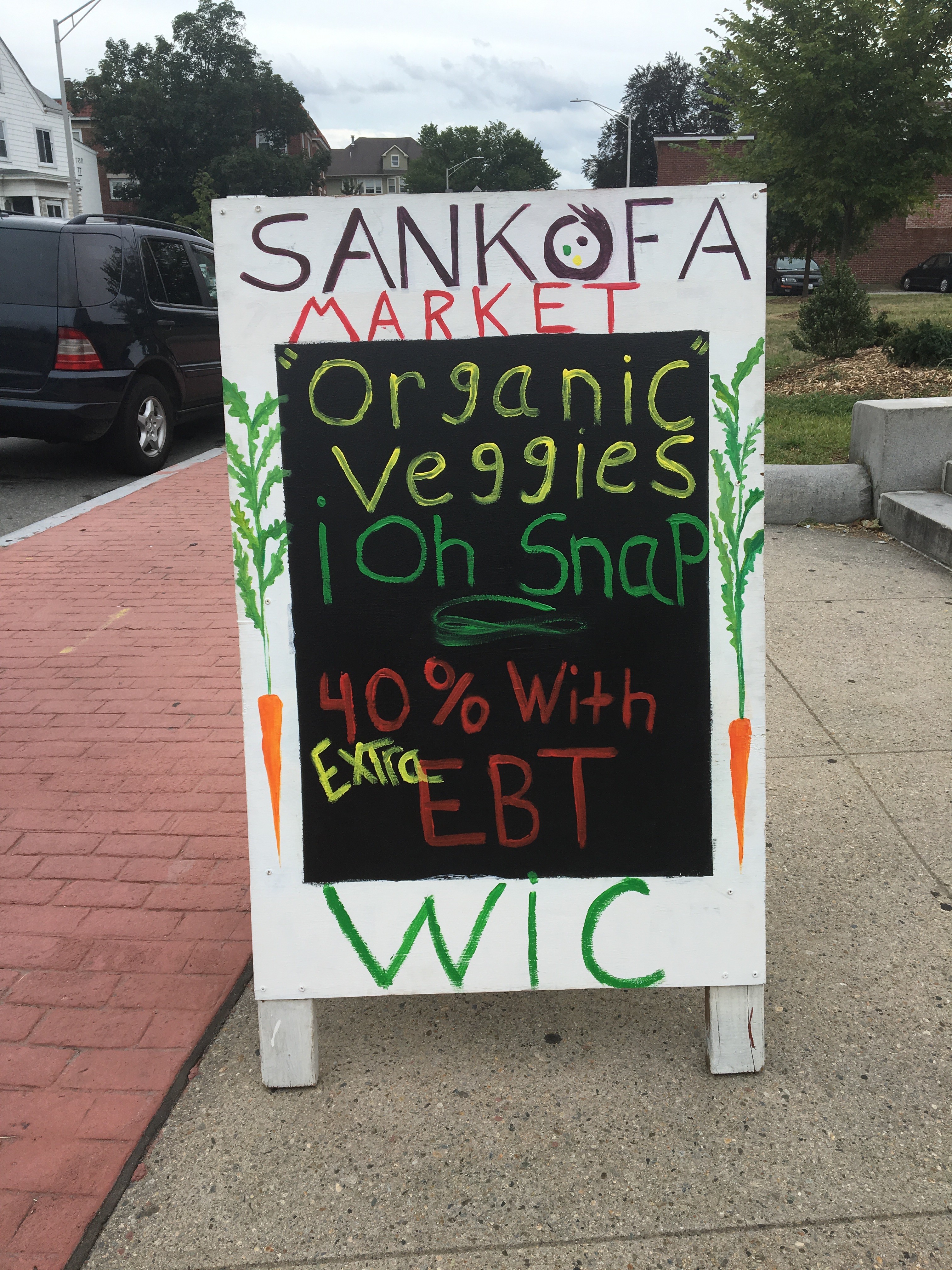From farm to market: Rhode Islanders start agricultural careers
Farmers as a whole in Rhode Island are facing some challenges. According to Rhode Island Land Trust Council, the state has lost over 80% of its productive farmland since the 1940’s. Today, Rhode Island’s farmland has the highest cost per acre of any state in the...
 “Plantamos las papas, tomates, kale, pepinos, las auyama, menta…” said Margarita Martínez, introducing her produce at a SCLT table.
Margarita and her husband Teodulio Martínez are from the Dominican Republic. They’re growing in the West End of Providence, and said they are hoping to expand to beekeeping, which they did back when they lived in the DR.
Like Margarita and Teodulio, a lot of growers who use the Southside Community Land Trust are immigrants. The diversity of growers using SCLT is representative of the neighborhood where the Sankofa Market takes place.
“The West End is a community of people, who 40% are born outside of the United States, so at Sankofa Market, we want to really celebrate the diversity of people in this neighborhood and the skill sets that they bring here,” said Adeline Newbold, who runs the market through the West Elmwood Housing Development Corporation.
Bozzi of the Southside Community Land Trust said immigrant farmers have different needs while learning how to grow and sell their products.
“The needs for new Americans to learn how to become an entrepreneur in the US, it’s different than an American-born person. So we teach our programs with ESL, English language learning, in mind. We’re providing different kinds of programs, given that we’re working with folks that have different levels of English and writing proficiency,” said Bozzi.
As growers set up their tables at the market every week, learning the tricks of the farming trade, Newbold said other community members are having their first experiences at farmers markets too.
“What’s really cool about this market is that we get a lot of people who have never been to a farmers market before, people who just see it walking by,” said Newbold.
“Plantamos las papas, tomates, kale, pepinos, las auyama, menta…” said Margarita Martínez, introducing her produce at a SCLT table.
Margarita and her husband Teodulio Martínez are from the Dominican Republic. They’re growing in the West End of Providence, and said they are hoping to expand to beekeeping, which they did back when they lived in the DR.
Like Margarita and Teodulio, a lot of growers who use the Southside Community Land Trust are immigrants. The diversity of growers using SCLT is representative of the neighborhood where the Sankofa Market takes place.
“The West End is a community of people, who 40% are born outside of the United States, so at Sankofa Market, we want to really celebrate the diversity of people in this neighborhood and the skill sets that they bring here,” said Adeline Newbold, who runs the market through the West Elmwood Housing Development Corporation.
Bozzi of the Southside Community Land Trust said immigrant farmers have different needs while learning how to grow and sell their products.
“The needs for new Americans to learn how to become an entrepreneur in the US, it’s different than an American-born person. So we teach our programs with ESL, English language learning, in mind. We’re providing different kinds of programs, given that we’re working with folks that have different levels of English and writing proficiency,” said Bozzi.
As growers set up their tables at the market every week, learning the tricks of the farming trade, Newbold said other community members are having their first experiences at farmers markets too.
“What’s really cool about this market is that we get a lot of people who have never been to a farmers market before, people who just see it walking by,” said Newbold.
 She said that there’s a common misconception that farmer’s markets are expensive. The Sankofa Market offers incentives through SNAP, a federally funded program that helps low-income households pay for nutritious food using an Electronic Benefits Transfer card. At the market, for every $5 you spend with your EBT card, you get an additional $2 worth of fresh fruits and vegetables.
Here in Rhode Island, there are many areas that don’t have supermarkets close by, so it can be hard to access fresh produce. The Southside of Providence, where the Sankofa Market is located, is one of these areas. One Southside Community Land Trust worker said this is the one of the only places people can buy produce, like squash and herbs, that lead to dishes on the table.
She said that there’s a common misconception that farmer’s markets are expensive. The Sankofa Market offers incentives through SNAP, a federally funded program that helps low-income households pay for nutritious food using an Electronic Benefits Transfer card. At the market, for every $5 you spend with your EBT card, you get an additional $2 worth of fresh fruits and vegetables.
Here in Rhode Island, there are many areas that don’t have supermarkets close by, so it can be hard to access fresh produce. The Southside of Providence, where the Sankofa Market is located, is one of these areas. One Southside Community Land Trust worker said this is the one of the only places people can buy produce, like squash and herbs, that lead to dishes on the table. 
